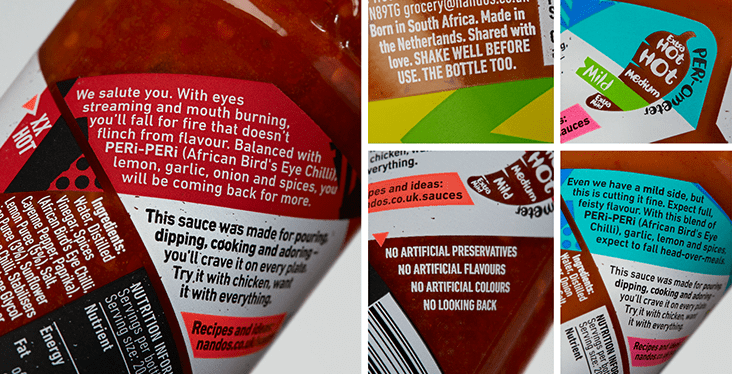How to write words worth talking about on social
Words matter. That’s a simple truth, but especially for brands on social. What you say and how you say it will make people remember you – or make you fade into the background.
There’s power in being unique, and yet, brand tone of voice (TOV) is becoming increasingly homogenous. Brands are self-sabotaging their own uniqueness on platforms like Twitter because they’re too concerned with sounding platform-native.
The solution is clear: brands must be distinctive or risk going unheard. Nike knows it. Innocent knows it. And Vikki Ross knows it.
Vikki is a copy chief and brand and TOV consultant who’s worked for some of the biggest brands there is, including Sky, Nando’s and ITV. Her Social Minds podcast episode was full of actionable advice to help marketers build a brand with words.
Start with Vikki’s three foundational principles: get real, get personal, and get active. Then, make your writing interesting and engaging: make words work, make words count, and make words dance (copywriting loves the rule of three).
Copywriting is a conversation with whoever your audience is.
The best explanation of these six principles comes from Vikki herself. It’s all in her Linkedin article, which you should read right after this.
But in essence, copywriting is a conversation with whoever your audience is. That means using their language – the simpler, the better. Avoid technical jargon or marketing speak.
There’s a reason copywriters love Apple’s iPod pitch “1000 songs in your pocket”. It addresses the audience directly. It sells the product’s benefits, not features. Apple didn’t say “5 GB of hard drive storage”, even though it was true, because that’s not a language everyday consumers understand.

“Marketers love words like ‘discover,’, ‘enjoy’ and ‘experience’ but they’re not words that real people say,” explains Vikki. “No one says they experienced a delivery or they enjoyed a Coke.” Clarity over complexity; say exactly what you mean and worry less about sounding clever.
Nailing TOV consistency on a personal level is one thing, but scaling this across teams is the real challenge. Here a comprehensive brand book is your best friend. Length and contents will vary depending on whether you’re a small business, a big name brand or somewhere in between, but Vikki’s copywriting principles still apply.
Make adjectives facts. Instead of saying “amazing drama”, say “award-winning drama”. Facts make your story interesting and, more importantly, believable.
That means making words count and keeping your TOV guidelines concise. Create lengthier guidelines for anyone who writes copy day-to-day, but include a section at the end giving top-line information. If you can’t sum up your TOV in a paragraph, do it in three principles.
It also means making words work, and in this case, avoiding ambiguous words like ‘fun’ and ‘playful’ to describe your brand. Not only is every brand trying to be these things, but they mean different things to everyone. Instead, strive for specificity above all else. If you want to sound like Brand A, B, C, D and E, you’ll only create confusion for anyone attempting to write for you.
Your TOV should always be the same, but dial it up or down depending on the channel. It should still feel like it’s coming from one place.
Another enemy of consistency is legal or corporate statements that escape marketers’ attention. It’s a common sight: a brand announces its latest competition written in its own TOV. Underneath it, a bland paragraph explaining the competition’s terms and conditions. Jarring, right?
But this shouldn’t be the case. Treat all copy equally, because, as Vikki says, “Why would you write something so important in a way that people can’t understand?” Think of Nando’s, where no copy goes unnoticed. Or Innocent, where LinkedIn posts about sustainability sit comfortably alongside jokes about the weather. Marketers assume that if their legal or CSR-led copy gets a brand personality makeover, it loses its seriousness – but it can be done.

The aim is to communicate everything that you’re legally required to without sacrificing comprehension and TOV – your legal team can help you with that.
“Not every social media team has a copywriter but is expected to write like one,” Vikki says. That’s why it’s important to include summarised instructions in brand guidelines. This could be a glossary of brand words or phrases, clarifying spelling or stylisation of product names, or a checklist that anyone can use when signing off copy.
And if you’re not already, you should be involving your social team in the campaign process right from the beginning. If they’re briefed during creative meetings with everyone else, they’ll have all the assets in their toolkit and they’ll know exactly how to execute them on social.
Vikki’s tips for a consistent TOV:
- Start with these principles: get real, get personal, get active. Then, push them: make words work, make words count and make words dance.
- Follow a personalised marketing calendar with relevant dates and events. Create your own or use a template like Twitter’s.
- Have your CEO email out new brand guidelines so everyone sticks to them.
- Even your legal and CSR-led copy should still sound like you. Your legal team will know what’s essential; tweak the rest to put your own spin on it.
- Sell the benefits, not the features. Don’t say: “We sell a wide variety of barista standard coffee”. Say: “Get the barista experience at home.”
- Tailor guidelines to different audiences. Write a comprehensive guide for copywriters and a summary/checklist for anyone reviewing and approving copy.
- Sum up your brand TOV in three principles, have your copy state three product benefits, or use three words for a slogan or tagline.





